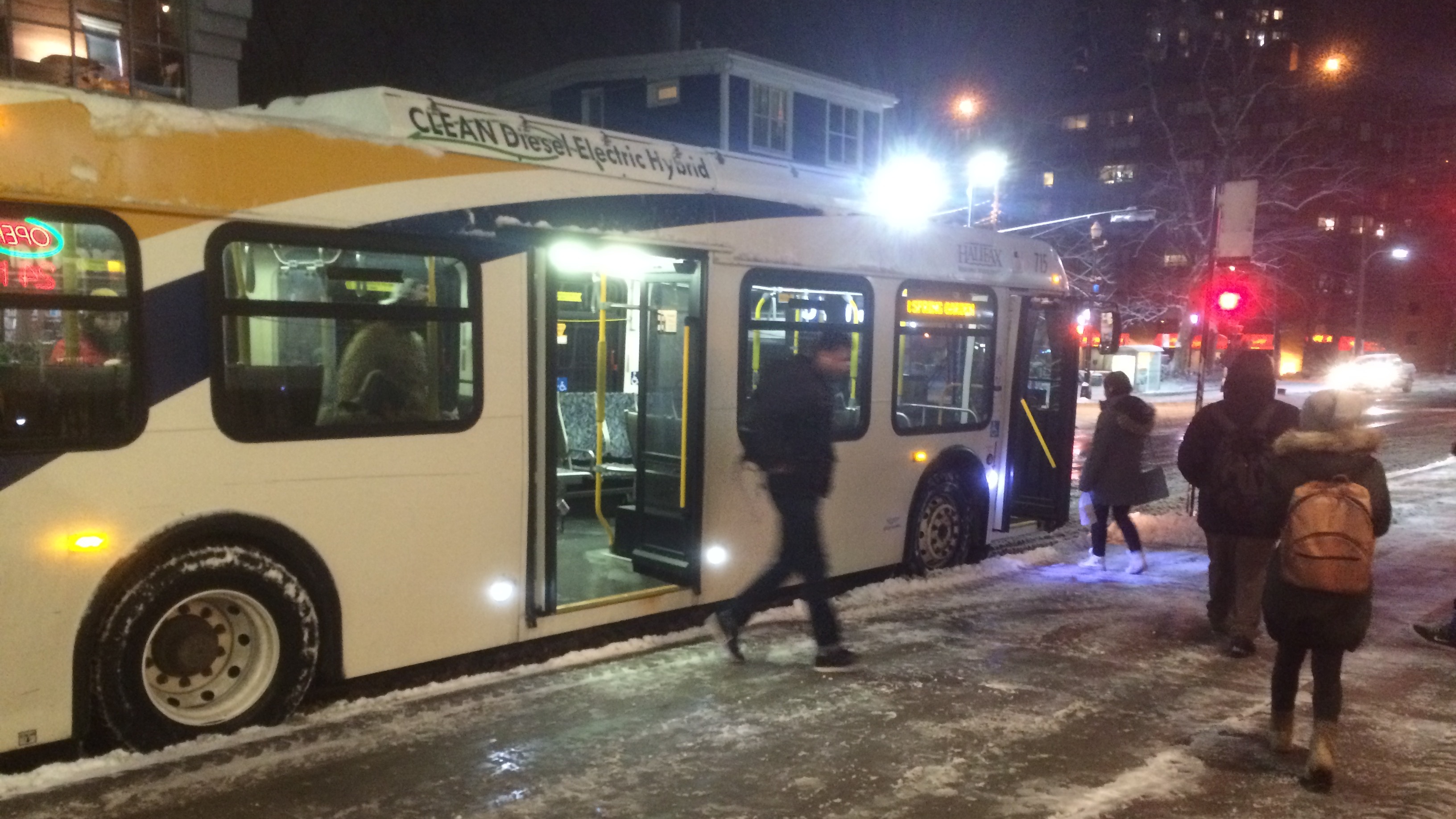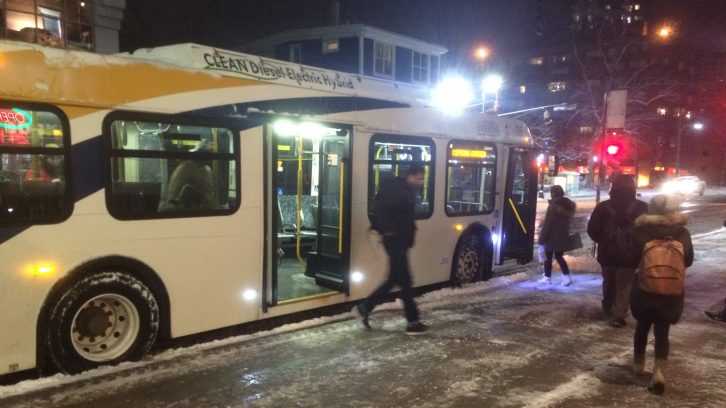Transit
Waiting out in the cold could be a thing of the past
Halifax buses now equipped with real-time location technology

caption
New real-time bus locating technology has the potential to keep riders updated on the whereabouts of their bus, especially after fresh snow.
caption
New real-time bus locating technology has the potential to keep riders updated on the whereabouts of their bus, especially after fresh snow.Tired of bus delays? Tired of waiting for the number one for ten minutes, only to have two number one buses come by at the same time?
Those days could be over.
Today Halifax Transit began testing real-time bus location technology. The data produced will be made available to third-parties for use on popular mobile or web apps, such as Google Maps. Now, instead of only the scheduled route times, apps will be able to provide users with live information that indicates if a bus is on time or not.
“It’s the greatest thing that (Halifax) Transit has ever done,” says Halifax resident Mitch Gallant. “After years of waiting in the freezing cold for 20 to 30 minutes, when Go Time told me the next bus would be by in three minutes, I caught my bus last night without being outside a second longer than I needed to be.”
This isn’t a new idea. Many Canadian cities, from Toronto to Regina to Vancouver, have been offering similar services for years. The idea has even been advocated here before, in a municipality that often gets criticized for its tardy buses.
During its initial launch, the real-time location project will be monitored as a beta — or test — version. This means users could still experience downtime or inaccuracies. However, the municipality, in a public service announcement, says “the technology team will be closely monitoring the service to identify and address potential issues.”
In theory, when the beta period is finished, Halifax Transit will have accurate bus times built right into the apps people are already using to get around.
Halifax Transit also recently launched a transit stop announcement system. Announcements occur before each stop, indicating the intersections of the stop. The new addition is aimed to help the visually impaired, tourists, or even local residents at night or on an unfamiliar route.
These improvements come as the municipality works on an “integrated mobility plan.” The overall goal of the plan is to “create a regional vision for mobility and help to direct future investment in transportation demand management, transit, active transportation and the roadway network.”

